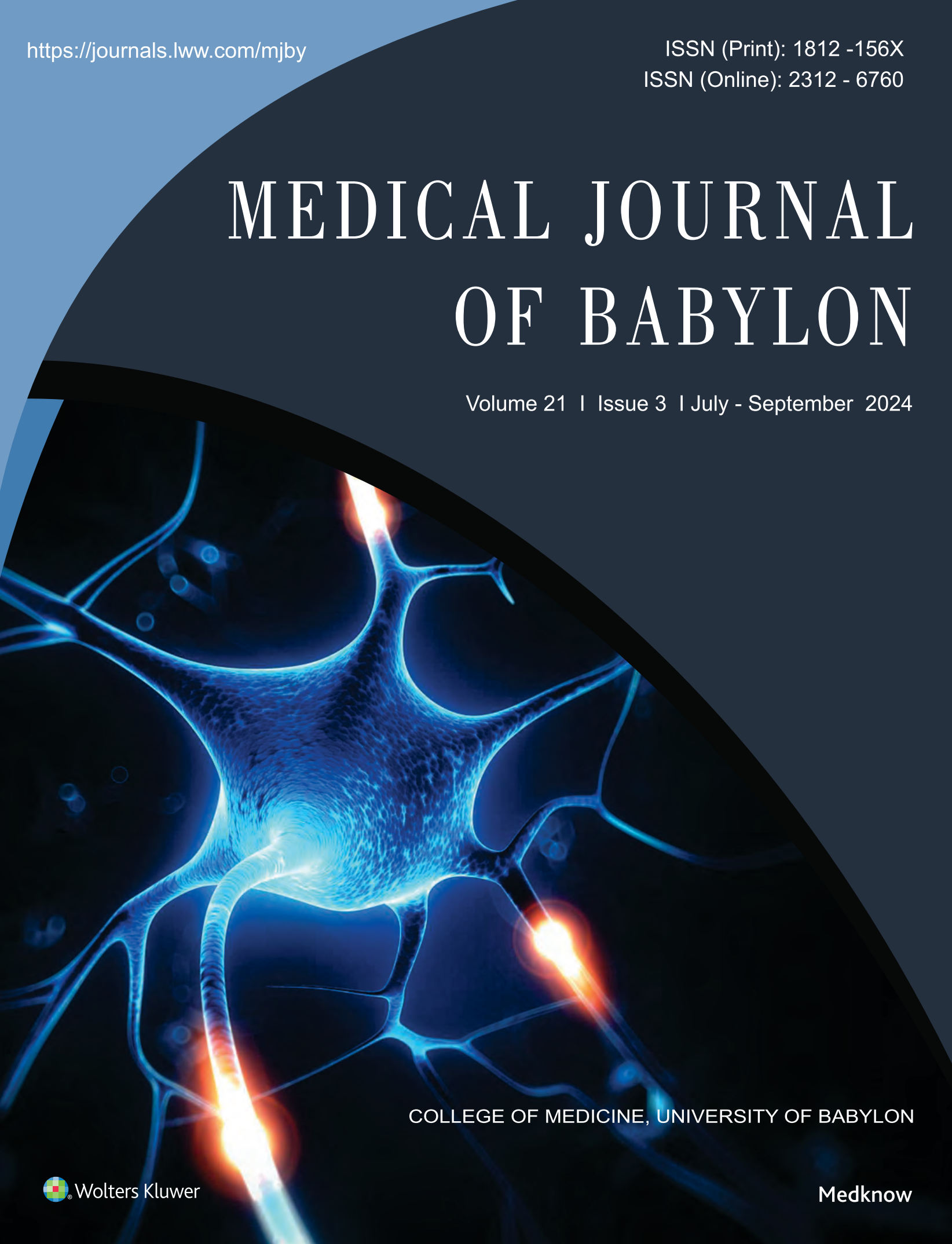Abstract
Objective: The aim of this study is to assess the incidence of variable causes of pancytopenia in Babylon
governorate,Iraq and to determine their relation to age, sex, clinical manifestations and disease outcome.
Materials and Methods: This is a prospective and descriptive study of 74 patients representing all
patients with pancytopenia admitted to or attending Marjan Teaching Hospital, Al-Hilla Teaching
Hospital, or Babylon Hospital for Paediatrics in Babylon,Iraq during the period from 1st July 2007 to 31st
September 2008.
The patients who were on chemotherapy for any reason or had a previous diagnosis for the cause of
pancytopenia were excluded.
Results: The most common causes of pancytopenia were acute leukaemia and a plastic anaemia
constituting more than 56% of patients, followed by kala azar in 10.8% and hypersplenism in 8.1%.
Other causes found in this study include lymphoma, multiple myeloma and megaloblastic anaemia in
5.4% of patients for each; hairy cell leukaemia and secondary metastasis to bone marrow in 2.7% for
each; myelofibrosis and myelodysplastic syndrome in 1.3% for each.
Fatigue and fever were the most common symptoms seen, while pallor and splenomegaly were the
most common physical findings.
Conclusion: Acute leukaemia was the most common cause of pancytopenia, followed by aplastic
anaemia and kala azar.
governorate,Iraq and to determine their relation to age, sex, clinical manifestations and disease outcome.
Materials and Methods: This is a prospective and descriptive study of 74 patients representing all
patients with pancytopenia admitted to or attending Marjan Teaching Hospital, Al-Hilla Teaching
Hospital, or Babylon Hospital for Paediatrics in Babylon,Iraq during the period from 1st July 2007 to 31st
September 2008.
The patients who were on chemotherapy for any reason or had a previous diagnosis for the cause of
pancytopenia were excluded.
Results: The most common causes of pancytopenia were acute leukaemia and a plastic anaemia
constituting more than 56% of patients, followed by kala azar in 10.8% and hypersplenism in 8.1%.
Other causes found in this study include lymphoma, multiple myeloma and megaloblastic anaemia in
5.4% of patients for each; hairy cell leukaemia and secondary metastasis to bone marrow in 2.7% for
each; myelofibrosis and myelodysplastic syndrome in 1.3% for each.
Fatigue and fever were the most common symptoms seen, while pallor and splenomegaly were the
most common physical findings.
Conclusion: Acute leukaemia was the most common cause of pancytopenia, followed by aplastic
anaemia and kala azar.
